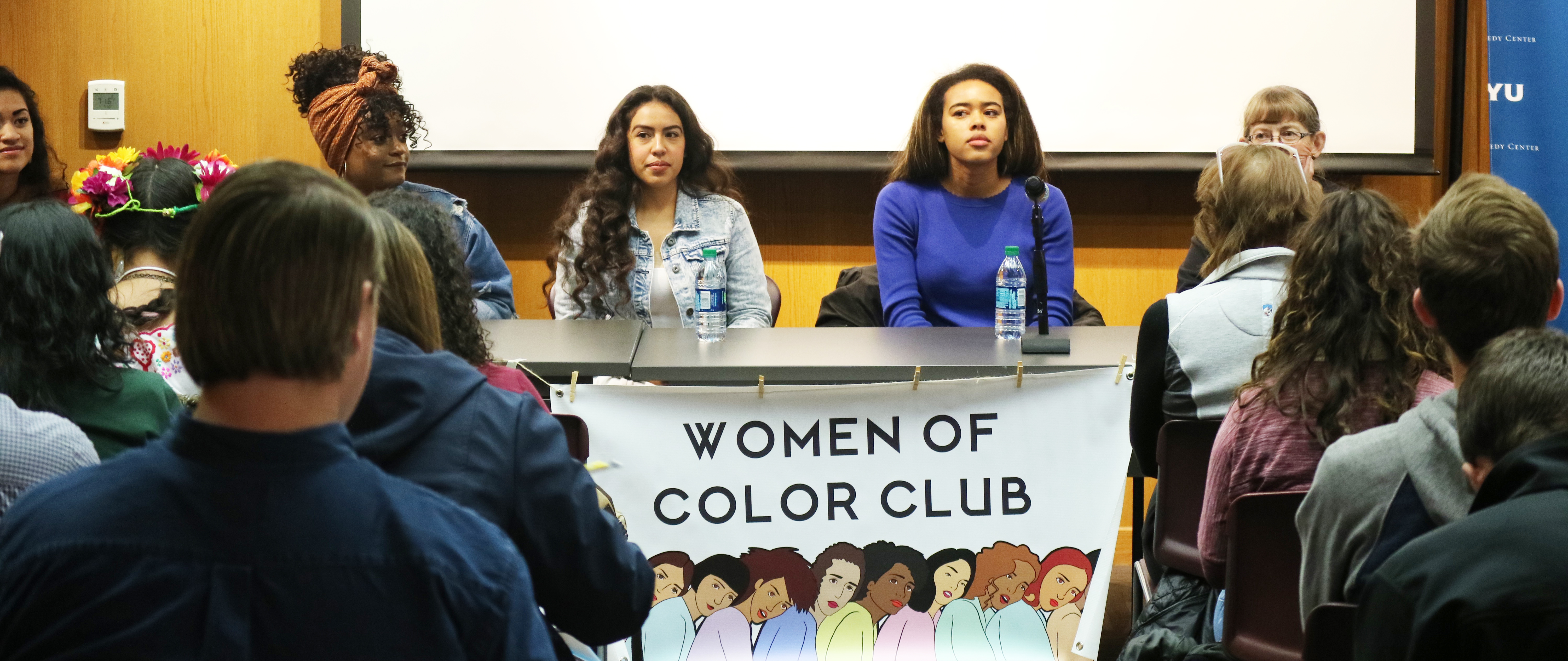
BYU psychology major Kristalynn Appiah said she recently met a friend’s roommate who was nice, but suddenly made efforts to introduce Appiah to others based on the color of her skin.
“‘My brother loves black people so you should meet him,'” Appiah said as she recounted the roommate’s comments. “She immediately calls her brother and his friends to say ‘I just wanted you to come over and meet this girl because she is black and you served in Detroit.'”
Appiah said she has never visited Detroit and struggled to know how to react to the situation — a situation she occasionally finds herself in since attending BYU.

Appiah said sometimes her experiences on campus talking with white students are “normal” and other times they are “interesting.”
“Navigating a Homogeneous Campus” was held on Oct. 31 at the Kennedy Center, where members of the BYU Women of Color answered questions and shared their experiences of being an individual of color at a predominantly white school.
The Women of Color club began in Fall 2017 and is one of BYU’s 14 recognized cultural or international clubs. There are 78 members in the Women of Color club, a 35 percent increase from last year, according to Women of Color club president Losa Smith.
Smith said the purpose of the club is to offer a place where women of color can be themselves and learn how to handle situations and topics concerning race.
“We provide a space for women of color to exist in their authenticity, to educate themselves on the general person of color experience in America,” Smith said. “We provide a space for women of color to feel empowered to have potentially difficult conversations with their family, friends, acquaintances and professors about any of the topics we discuss.”
The Women of Color club has held a range of activities over the past year, from gathering together to admire the lyrical work of Beyoncé to hosting a lecture series and inviting guest speakers to discuss women and diversity.
Club secretary Delirio Juárez said the club has been a safe place where she feels connected and welcomed by others.
“I went to different clubs looking for people who thought like me and looking for people who looked like me where I could share my experiences,” Juárez said. “And now, by being in the Women of Color club, that is something that I hope to do for other women of color as well.”
Smith said the club tries to create academic opportunities and address topics club members want to discuss, such as institutional racism, tokenization and microaggressions. The Women of Color club also addresses topics concerning mental and emotional health, self-compassion and self-expression, according to Smith.

Women of Color vice president Déborah Aléxis said she hopes BYU will become more inclusive by educating students and addressing different issues, such as the lack of diversity in campus artwork.
Aléxis said there was a painting previously presented in an art show in the HFAC with a line of angels who were all white.
“So what do people think heaven is like, where our color and our experiences are completely erased, and we all just become less of it?” Alexis said. “Heavenly Father took the time to create black and brown people. We’re like this for a reason, so that’s not going to go away. I think that’s something that’s overlooked and that’s not talked about.”
At the discussion panel, members of the Women of Color club said a solution to develop a more inclusive campus environment is to learn and become open to more diverse experiences.
“Just becoming more educated, you will naturally start to form those types of relationships and become more exposed to different ideas and different people because you’re putting yourself in that space,” Juárez said to the audience. “But it takes work on your part to be able to do that.”
UVU illustration major Courtney Heidreich attended the discussion panel and said she agreed with the suggestions shared.
“As white people, it’s important that we learn and become informed,” Heidreich said after the event. “Because if we don’t know and act ourselves, the change will never happen.”
Global Women’s Studies Coordinator and event moderator Valerie Hegstrom said the Women of Color club is inspiring because of how important it is for individuals to take part in making a more diverse campus.
“They did a great job. They were honest, and some of the stories shared were shocking,” Hegstrom said. “The people listening, they are what make a difference. I really would just like to see more diversity on campus. I know it would be such a blessing.”
Smith said she hopes the Women of Color club will continue to be a place where women of color can feel comfortable and at home in the future.
“I see all of the women of color on campus being aware that our club exists as a place for them to exist, to get educated on things that affect them personally and feel empowered to be their best selves,” Smith said.




